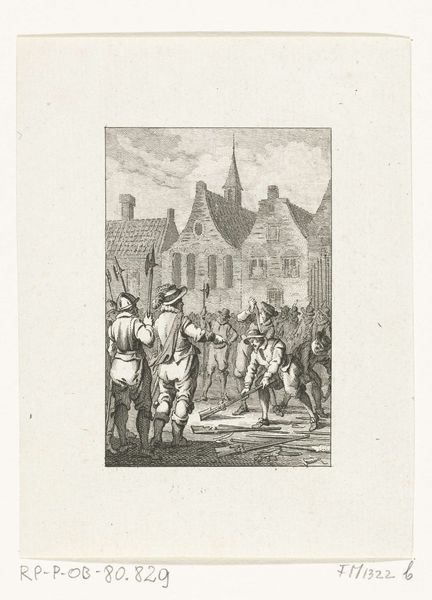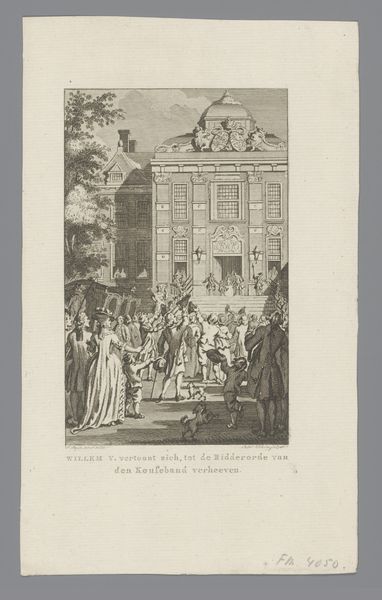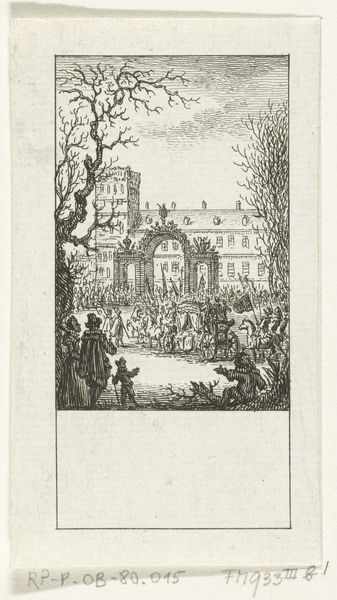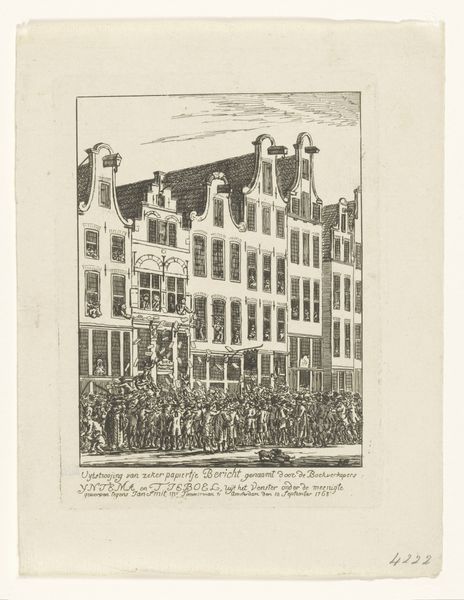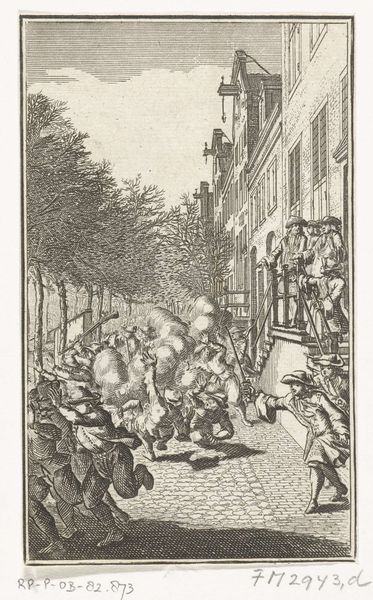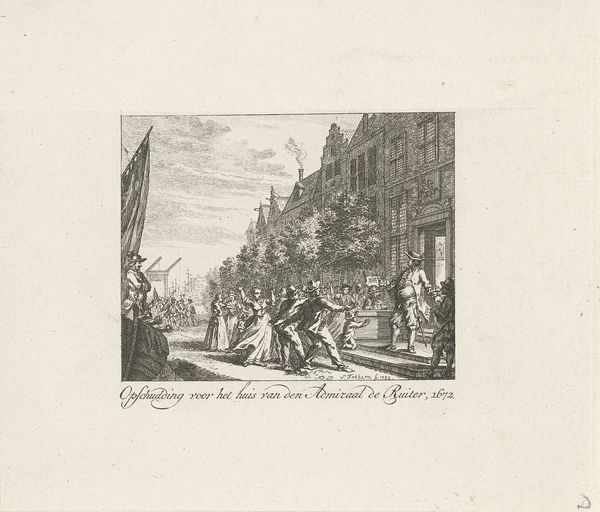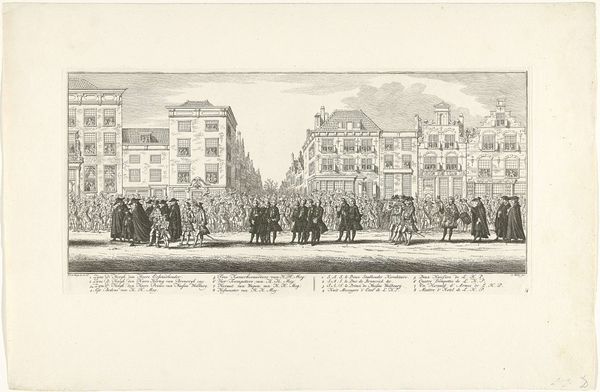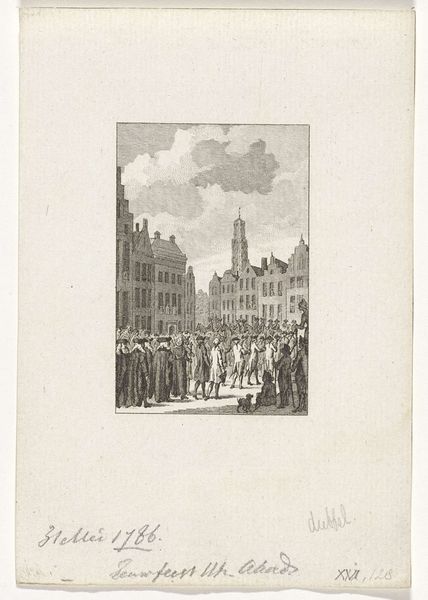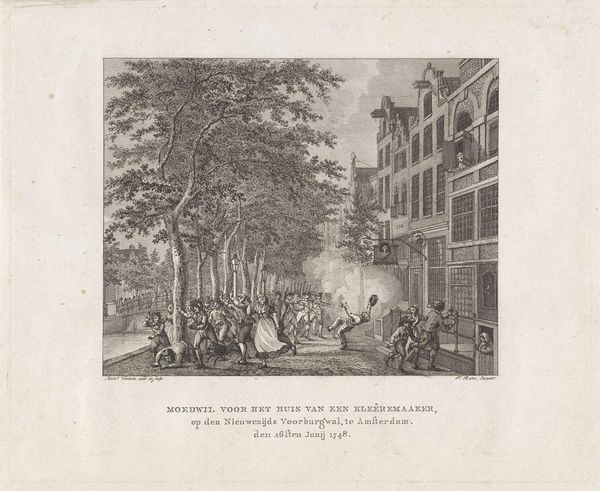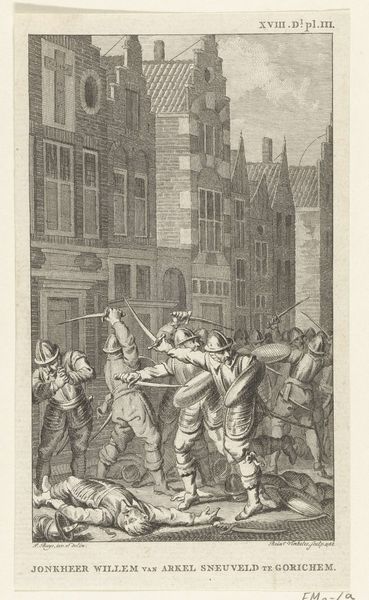
Plundering van het Pintohuis tijdens het Aansprekersoproer te Amsterdam, 1696 1779 - 1781
0:00
0:00
Dimensions: height 80 mm, width 41 mm
Copyright: Rijks Museum: Open Domain
This etching by Simon Fokke, created around 1750, depicts the plundering of the Pinto house in Amsterdam in 1696. Here, a mob, fueled by a potent mix of resentment and rage, attacks the house. Note the widespread gesture of raised arms, a primal expression of outrage. We observe this same motif echoed in antiquity, such as in depictions of the Sack of Troy. Throughout history, this gesture resurfaces, each time carrying the weight of collective anger and social upheaval. In the Renaissance, we see it again in battle scenes, signaling the raw, untamed emotion of conflict. The act of looting itself, as seen here, transcends time. Whether in ancient Rome or revolutionary France, it remains a stark symbol of societal breakdown and the release of pent-up frustrations. This deeply rooted image taps into our collective memory, stirring subconscious associations of chaos and change. Thus, the image becomes more than a mere historical record. It stands as a testament to the cyclical nature of human emotion and the enduring power of symbolic gestures across time.
Comments
No comments
Be the first to comment and join the conversation on the ultimate creative platform.
